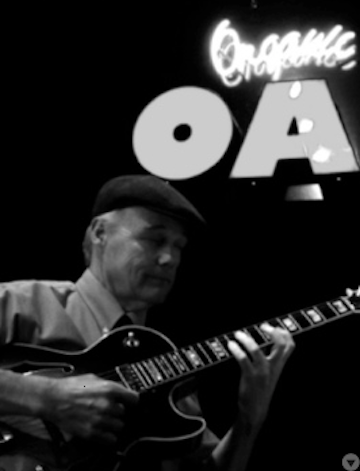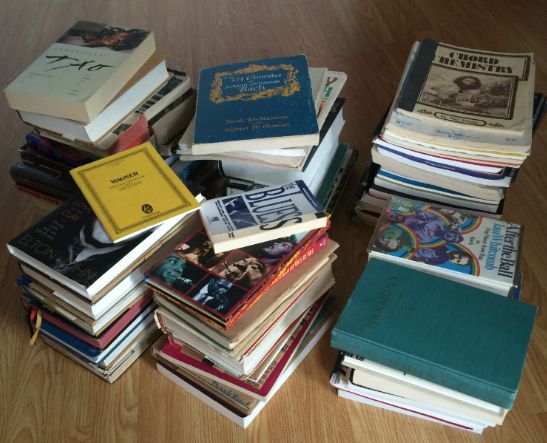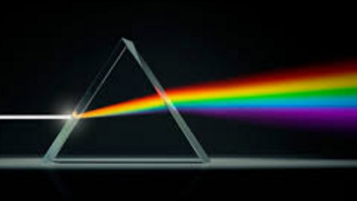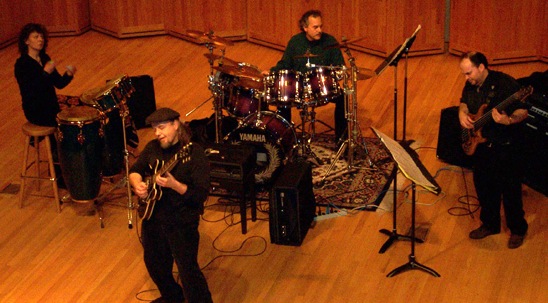~ about the author jacmuse ~ |
About Jacmuse. Loving music from the beginning and numbers, symbols and math too, my studies in music over the five decades or so now have brought me many joyous discoveries, friendships, challenges and created a place for me in many communities, bringing folks together with the musical arts in sharing a collaborative, creative spirit. By pairing a formal BA college level study of Bach, Coltrane and jazz guitar, and now having worked with performers from within so many of the Americana weave of styles and genres, I place in this work a modern theory understanding of how the now ancient and original aural colors and rhythms have evolved through the centuries, which all combine to create the now vast and yet ever expanding collection of AmerAfroEuroLatin songs we love ... as each new generation of artists come along. |
About those stars ... university training. The stars aligned for me back in the early 80's and I was able to attend formal university for music and art music in way upstate New York. As a novice player, with near zero music schooling, it was the warm welcoming into the arts by faculty and friends in a wintery January, second that inspires my passion ... and some payback, in writing this 'mentor to learner' style prose the way the story of our music history and its theories were brought to me. So in honor to all that would call the Myers Fine Arts (pictured here) a home, and now with an additional three decades of further study, explorations and mentoring, I've reconstructed the basic musical art, theory, measurable curriculum, for a 'Bachelor of Arts' degree for the study of our Amer Afro Euro Latin musics, into this modern leaning and multidimensional e-book.
At S.U.N.Y Plattsburgh, as an art major, my own curriculum became history, theory, jazz guitar and performance. The music of Bach and Coltrane became the bookends to my studies. They bookend this e-book too. This work is intended for all musicians who would also aspire for a university learning opportunity. |
Formal teacher training. I was further stoked to write music Ed curriculum by taking formal teaching training at UAA Alaska / Fine Arts Building, in Anchorage. In one class, we discussed the possibilities of writing curriculum with the new web based, interactive technology that was just then emerging into the mainstream. In my case, this allowed for any music 'theory' musings to be written out in standard notation that could now be aurally heard through playback through a computer's speakers. Voila ! A three dimensional BA level music theory e-book, that we can study 'by ear' and rote master, opens the door for all :)
The writing of this book. To write such a book, including pathways for both mentor guided dialogue and also self directed discovery by curiosity through study, becomes possible in part thanks to the 'perfect closure' we can apply to many of our components and theories. For example, think of the piano keys and how they loop our 12 pitches into multiple octaves on a standard piano, always coming back to a same begin point; a closed looping of the pitches. When broadly applied to the musical components, these 'loops of pitches' create; the scales, arpeggios, chords, forms and rhythms, knowing that the structural 'perfect closure' principles insure that our theory queries balance out; by always looping back to whatever point we started. With this closure we know our music theory 'math' is solid golden and with continuing 'closures', a self directing curious learner will be able to accelerate their learning. 'Closure' applies to music's elements too, there's just 12 unique letter name pitches, only need 7 to complete the diatonic scale, the 5 in between are blue notes to jazz it all up. So for some learners getting a complete story of what's available happens quickly, then their own work begins to decide what is needed to create the art that's in their heart. So theory 'closure' also 'accelerates' one's own learning, to better focus in on skills needed to express, and get on to the 'what if' questions often demanded by artists as art is created. Music and math. An early love of all things numbers as a kid at Shubert School, this public school pictured below, helped later in life in untangling the theory relationships between the musical notes and our basic numbers of intervals, cycles of pitches and key centers.
For example, the letters of a 'C' major scale can in theory be represented by numbers too; 'C D E F G A B C' becomes '1 2 3 4 5 6 7 8' The 'movable one' arrives. And we use the numbers to help count our histories in years, measure pitch interval distances and create set in stone labels each one, the half step (1/2) / whole step (1) formulas for scales and modes; the unparalleled musical chord kaboom with the tuning solution to the 12th root of 2, 1.0594631. There's One through Seven of numerical chord progressions, the diatonic '3 and 3', numbered color tones of 7th's and 9th's and beyond for blues and jazz chords, interval cycles that close, and all the '1 2 3 4' synchopations, accents and cycles of our beginning rhythms and subdivisions of time. So there's just a lot of numerical ways into music theory. And as it is for so many fields of study, that a love of numbers can become the catalyst for a lifelong journey of discovery and learning about music, empowering us to see numerical coincidence and magics at near every step along the way, often prompting even of grander schemes and curiosities to pursue. This e-book. With hyperlinked vocabulary words to describe and label 2500 years worth of musical arts components, that today is still represented by 1000 year old notation symbols, within linked to mp.3 audio playback of the written music, the new 'tech' brings this 'music / math theory' story together into an audio theory e-book for both readers and 'by ear' artists. Rather evolutionary in regards to the music education curriculum available up to the 1980's, we can learn a music word such as 'arpeggio', hear what it sounds like, see what it looks like in 1000 year old symbols and then explore the various ways it's knit into our Americana styles and genres. On the flip side, we when see written music from any era, we have a way into hearing its story. For all music was once new. For all interested in music. This three dimensional presentation of ideas creates a wide inclusiveness for all learners and all lovers of all musics. That one's own curiosity finds a way in, and once engaged, linked topical discussions reveal pathways to explore through the history, the organizations and systems of pitches, that we have all shared in common for the last couple of millennia. Add in a e-mentor or two of private or formal school learning centers, to bounce ideas off of and check our work, and in this e-book we've potentially a global reach to a universe of knowledge through musical art. |
A love of reading and books. Beyond super lucky that in elementary school I learned how to read the written word in English. I later dabbled in French too, and there got some new word syllable rhythm magic that I think turned out to rhythmically swing just fine, also got the lid beret :) So all along in my own studies, books have been a foundation, with a love to read of most anything. Here's a couple of stacks of music theory and history books that influenced my writing of this book. Bach to Coltrane, East to West and North to South, the spiritual energies of love in the written word that moves the arts forward as the new generations come along. |
In this building. We educate to better our lot in life and in doing so the lot of our community. And in public school buildings such as this, we as a community build education programs for the betterment of all. This is my public elementary school, Shubert School. which I attended grades one through six in the 1960's. Special thanks to; Mrs. Daymond, Mrs. Hartman, Mrs. Bowen, Mrs. Favata, Mrs. Surillo, Mr. Hodges and Mr. Lipschitz. |
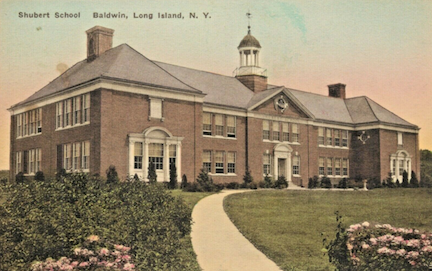 |
In this building. We educate to better our lot in life, and in university buildings such as this, we as a community build education programs for the betterment of all. This is the John Myers Fine Arts building at the State University of New York at Plattsburgh, where I achieved a B.A. Arts, in 1982. |
 |
In this building. We can learn to educate those who are interested, and gifted too, in university buildings such as this. This is the University of Alaska Anchorage Fine Arts building, where I achieved a State of Alaska public school music teaching credential in 1987. |
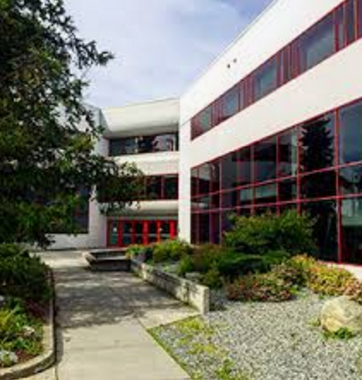 |
Karma Helix 1995, on stage at UAA. A collection of songs I wrote for the seven chakras, colors included and all based on releasing the energy as we move from our red root on through yellow, to orange, to green, to blue, to violet and our indigo purple crown. Once song for each chakra color which combine together and bring the joy of living a musical life. ~ here performing in the recital hall of the building pictured just above ~
Karma Helix band featuring; Jacmuse / guitar Chuck Henman / drums Sandra Calvillo / Muse of percussion ~ |
SalmonFest Alaska 2023. Jacmuse/bass (note Ampeg SVT amp at right :) all smiles all around after show performing with "HarpDaddy & Back Country Mojo" featuring Ms Maddy Smith. |
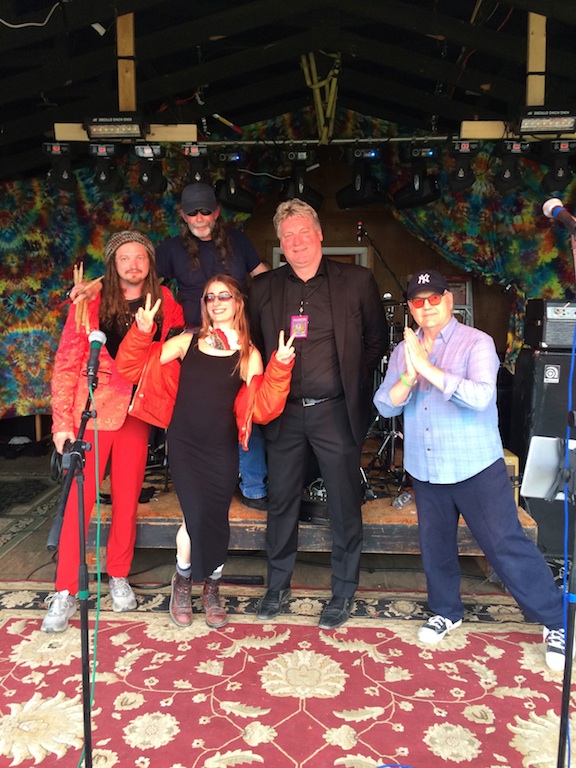 |
HarpDaddy Crew ~ Summer Tour 2023. From left; Ben Heller guitar, Pete Gates drums, Maddy Smith vocals, Darren 'HarpDaddy Smith' vocals & harmonica, JacMuse bass. |
Find a mentor / e-book / academia Alaska. Always good to have a mentor when learning about things new to us. And with music and its magics, nice to have a friend or two ask questions and collaborate with. Seek and ye shall find. Local high schools, libraries, friends and family, musicians in your home town ... just ask around, someone will know someone who knows someone about music and can help you with your studies in the musical arts. |
|
Always keep in mind that all along life's journey there will be folks to help us and also folks we can help ... for we are not in this endeavor alone :) The now ancient natural truth is that we each are responsible for our own education. Positive answer this always 'to live by' question; 'who is responsible for your education ... ? |
References. References for this page's information comes from school, books and the bandstand and made way easier by the folks along the way. |
Intensive tutoring. Luckily for musical artists like us, the learning dip of the 'covid years' can vanish quickly with intensive tutoring. For all disciplines; including all the sciences and the 'hands on' trade schools, that with tutoring, learning blossoms to 'catch us up.' In music ? The 'theory' of making musical art is built with just the 12 unique pitches, so easy to master with mentorship. And in 'practice ?' Luckily old school, the foundation that 'all responsibility for self betterment is ours alone.' Which in music, and same for all the arts, means to do what we really love to do ... to make music :) |
 |
"These books, and your capacity to understand them, are just the same in all places. Always bear in mind that your own resolution to succeed, is more important than any other one thing." |
|
Academia references of Alaska. And when you need university level answers to your questions and musings, and especially if you are considering a career in music and looking to continue your formal studies, begin to e-reach out to the Alaska University Music Campus communities and begin a dialogue with some of Alaska's finest resident maestros ! |
|
